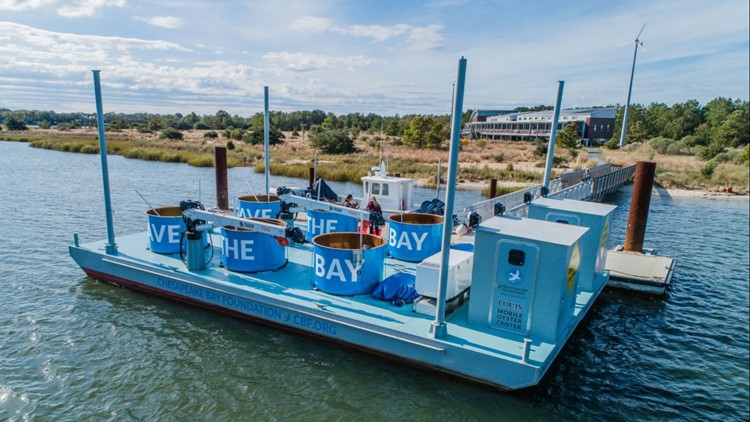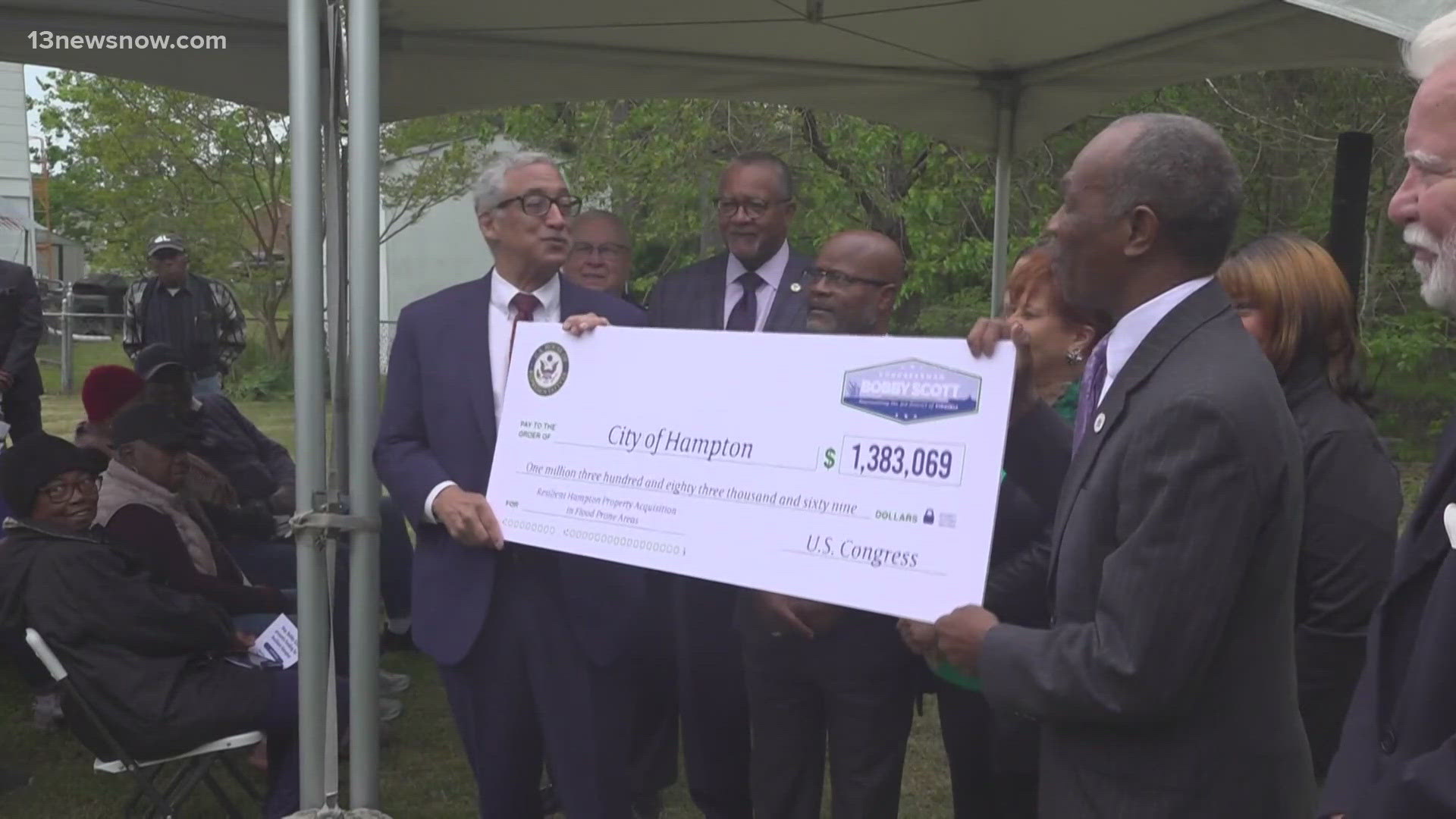VIRGINIA BEACH, Va. — The Chesapeake Bay Foundation is taking its oyster restoration efforts mobile - with a barge-based floating oyster center!
A release from the foundation said this mobile platform was the first of its kind, and would double the amount of oyster spats it could plant in Virginia's waterways.
"Our new oyster barge allows us to produce up to 15 million oysters per year," wrote Jackie Shannon, the foundation's Virginia oyster restorations manager. "We’ll also be able to educate and engage even more people by bringing an oyster restoration center to new communities across Tidewater Virginia.”
Right now, 9 million oyster larvae are in tanks on the Prudence H. & Louis F. Ryan Mobile Oyster Restoration Center. They were transplanted from the Brock Environmental Center in Virginia Beach, where the mobile center is now docked, earlier in July.
"The two linked barges hold six 850-gallon tanks filled with local river water where baby oysters attach, or “set,” to recycled shells or concrete reefballs," a spokesperson explained in a Monday release. "These are then planted on nearby sanctuary reefs. Two cranes aboard are used to move recycled oyster shells and heavy concrete reef balls, which quickly build three-dimensional oyster habitat."
The mobile oyster center is in the Lynnhaven River for now, but a spokesperson said it could soon be headed to other Hampton Roads waterways for its oyster restoration work, including the Elizabeth, York and Piankatank rivers.
Kenny Fletcher, the Virginia media coordinator for the foundation, said Lynnhaven River is one of the five tributaries of the Bay that's been targeted for oyster restoration.
The new center, sometimes called "Pru and Louis" by foundation employees, cuts back on the driving needed to move baby oysters from restoration centers to their intended homes.
Fletcher said that's because it eliminates road travel entirely - cutting back on emissions in the process.
Approved Chesapeake Bay Foundation oyster gardeners can pull boats up to the barge, pick up baby oysters, and head back to waiting oyster cages where the shellfish will mature for the next year (before being returned to the foundation).
"Reducing travel time and using local river water in tanks will help ensure healthy, well-adjusted oysters," wrote a spokesperson.
Every improvement will be helpful to the foundation's ambitious goal - planting 10 billion oysters in the Chesapeake Bay by 2025, as part of the Chesapeake Oyster Alliance.
"Each adult oyster can filter up to 50 gallons of water a day," Fletcher said. "So there's a huge potential for filtering water [from this project]."
Fletcher also said the juvenile oysters would form reef habitats as they grow, providing sanctuary for small fish and crabs, and providing hot-spots for fishers of striped bass - a species attracted to these reefs.
In its announcement, the Chesapeake Bay Foundation thanked Prudence and Louis Ryan, the Hampton Roads Community Foundation and the Marietta M. & Samuel T. Morgan Trust for support that lead to the barge's construction.



